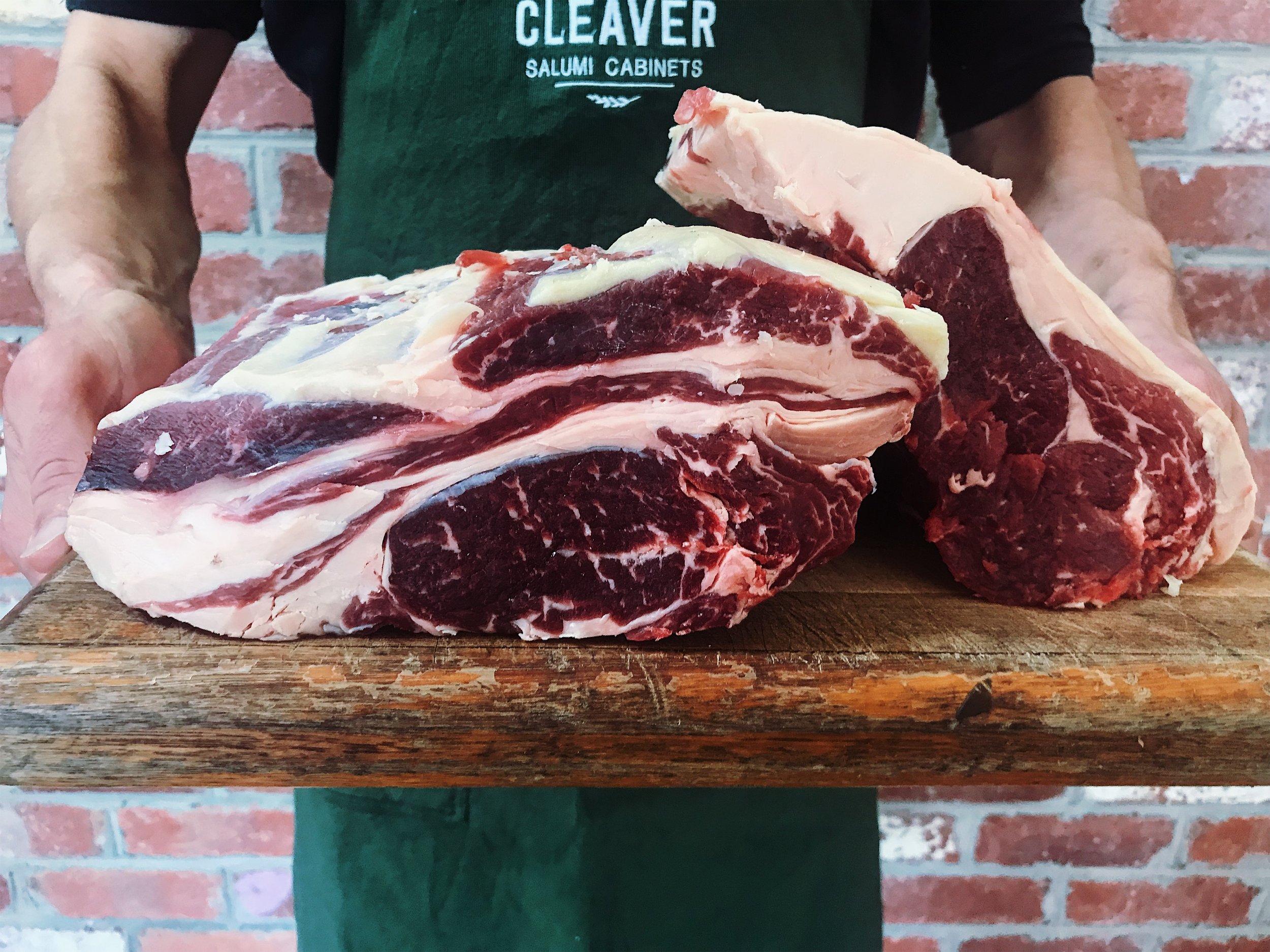
Dry ageing is a process of resting or storing whole cuts of meat, primarily beef and venison in a controlled environment, designed to intensify flavour and promote tenderness.
When you age meat, the enzymes that are present in the meat will start to break down the tough muscle fibres that are present in the meat.
In addition, if you are dry ageing your steak the flavour will improve over time thanks to enzymatic and bacterial actions, as well as oxidization of the fat on the steak. As time goes on your steak will develop a deeper, beefier taste. Eventually, the steak will begin to take on a pungent, cheese-like aroma as well.
The CLEAVER Salumi Cabinets PLUS are designed to provide the ideal environment for getting the most out of your aged meats.
{What is Dry Ageing?}
{What cuts can
you dry age?}
The best meat for dry ageing beef and vension are large muscle or sub-primal cuts on the bone like a striploin, ribeye or sirloin. Bones and fat layers are the best way to protect the meat from drying out too much.
It’s not advisable to try dry-aging single steaks because you will lose too much volume when cutting off the outer, dried layer that you won’t be left with much.
The meat should be as freshly slaughtered as much as possible. We recommend telling your butcher that you’re going to dry age so they can provide you with the perfect cut.
Whole freshly caught fish or firm, steak-like cuts of fish can be dry aged for 2 to 7 days as well.
We do not recommend dry ageing meat which has been in stored in cryovac or frozen.
Temperature: 1°C to 2°C
Humidity: 75% to 85%
Water in Humidifier: Yes
UV Light: Yes, for the first 3 to 7 days at least
{What is the ideal environment?}
While the addition of salt blocks or rock salt to the dry ageing environment can help with bacterial control and flavour profile, they are not necessary in the CLEAVER Salumi Cabinets PLUS range.
All the CLEAVER Salumi Cabinets PLUS range cabinets are fitted with an automatic air purification system and UV light for bacterial control.
{Do you need to add a salt block
to the cabinet?}
There is no exact age you should aim for - when it comes to dry ageing meat, the length of time comes down to a personal preference. However, the length you age your meat will determine the outcome of your final cooked steak in relation to changes in tenderness and flavour profile.
Age your meat for at least 14 days in order to notice any real changes. Anything less is not long enough to allow the tougher tissues to break down or for the flavour to change.
Between 14 to 28 days you will start to notice a difference in texture and tenderness.
Past 28 days the flavour will start to dramatically improve. As you approach 45 days of ageing you will begin to notice an intensity of the beefy flavours and nuttiness to the meat.
After 45 days your meat will begin to develop more pronounced funky smells and flavours, kind of like a mild stinky cheese. At this age it starts to become a personal preference. We recommend not ageing longer than 120 days.
{How long should
you dry age for?}
You have aged your meat to your desired level, now what?
Firstly, prepare the meat for cooking by removing the rind - the dark hard outer shell that forms during ageing, the cap of fat and the bone.
It is important to remove all the rind at this stage as it will not soften during the cooking process and will reduce your dining pleasure. Removing the bone is also important as it is difficult to increase the temperature at the centre of the bone to a food safe level. Carefully remove any areas on the surface or internal air pockets which have grown any mould.
When you sear a steak, the surface area comes into contact with high heat which kills off any bacteria. The middle of the steak is safe to keep rare, as it’s sterile, and has never been exposed to bacteria.
